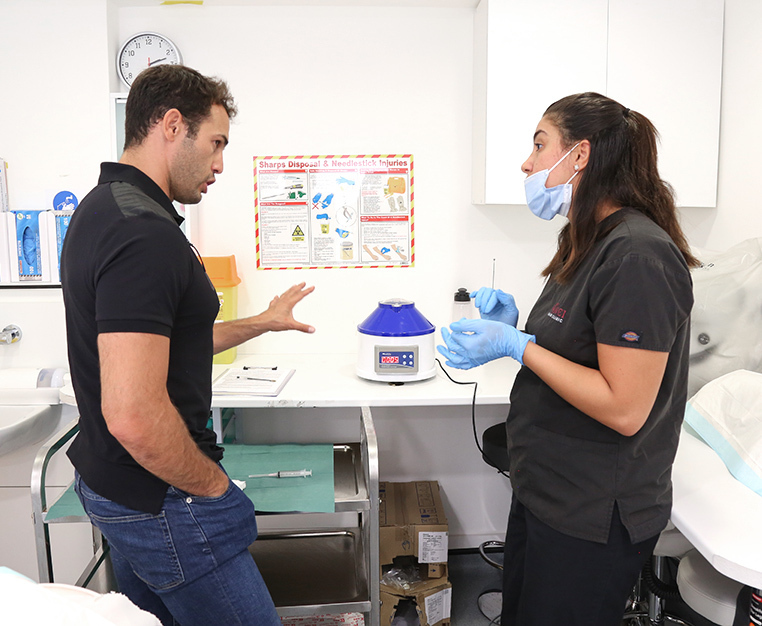If you’re thinking about having a hair transplant or have recently undergone the procedure, you might find yourself asking, “Will I go bald again after a hair transplant?”
It’s a common question and one we hear regularly at Vinci Hair Clinic. A hair transplant is a significant investment in your confidence and appearance, so it’s only natural to wonder if the results will last or if hair thinning could return in the future.
The good news is that hair transplants are designed to be a long-lasting, often permanent solution. However, the complete answer depends on several factors, including genetics and how well you take care of your hair post-procedure.
Here’s what you need to know.
How Does a Hair Transplant Work?
Hair transplants work by moving healthy hair follicles – usually from the sides or back of your head (known as the donor area) – to areas affected by thinning or baldness.
At Vinci Hair Clinic, we specialise in Follicular Unit Extraction (FUE), a minimally invasive procedure that relocates individual follicles. This method ensures results that are undetectable and mimic your natural hair growth pattern.
Will the Transplanted Hair Shed After the Procedure?
It’s normal for transplanted hair to fall out within the first few weeks in a process called “shock loss.” Don’t worry – this is part of the natural cycle.
The hair follicles themselves remain embedded in the scalp. Following a brief resting phase, they begin producing new hair, typically within three to four months. Within six to twelve months, you should see strong and healthy regrowth.
Once the transplanted hair grows back, it is permanent because it retains the genetic traits of the donor area, which is naturally resistant to balding.
Can Balding Reoccur?
The newly transplanted hair is designed to be permanent. However, this doesn’t mean that the rest of your hair is immune to thinning. If you were experiencing progressive hair loss before the transplant, the surrounding, non-transplanted hair may continue to shed over time.
This is particularly common in those who have:
- Androgenetic alopecia (male pattern baldness)
- Diffuse thinning (common among women)
- Had transplants at a young age without ongoing hair loss management
If this occurs, you may notice thinning around or behind the transplanted areas, which may give the impression that you’re “going bald again.”
Preventing Further Hair Loss Post-Transplant
To maintain a full and even look, we strongly recommend following a maintenance programme after your transplant.
Here are some effective options to protect your existing hair and prevent additional thinning:
1. Medical Treatments
- Medications like Minoxidil (e.g., Maxogaine) can prolong the life of your natural hair.
- For men, Finasteride may be prescribed to block DHT, a hormone that contributes to hair loss.
2. PRP Therapy
Platelet-Rich Plasma (PRP) therapy involves using your body’s natural growth factors to rejuvenate both transplanted and non-transplanted hair.
3. Low-Level Laser Therapy (LLLT)
Laser caps or in-clinic laser treatments improve scalp circulation and help to keep follicles healthy over time.
4. Hair Supplements and Scalp Care
Nourish your scalp and follicles with Vinci’s Vitruvian Line supplements, shampoos, and scalp serums to support robust, long-lasting regrowth.
By integrating these treatments into your post-transplant routine, you can minimise further hair loss and optimise your overall results.
Will You Need a Second Hair Transplant?
Possibly. If your natural hair loss progresses and creates unevenness or visible gaps between transplanted areas, you may benefit from a follow-up transplant.
That said, many of our clients achieve excellent, long-term results with one procedure, especially when they adhere to their maintenance programme and aftercare advice.
Does Your Age Affect the Results?
Yes, age plays an important role. Having a transplant at an early stage of hair loss – when its progression is unpredictable – may create thinning around the transplanted area as you get older.
That’s why every treatment plan at Vinci Hair Clinic is customised based on:
- Your age and current stage of hair loss
- Your family history of baldness
- The condition of your donor hair
- Your long-term goals and expectations
This tailored approach ensures stable, natural results that stand the test of time.
Final Thought: A Long-Term Investment
Will you go bald again after a hair transplant? Not in the areas where the hair has been transplanted – those follicles are genetically built to keep growing. However, if untreated hair loss continues in surrounding areas, new thinning may develop.
That’s why the most effective hair restoration plans extend beyond the surgery itself. A holistic maintenance strategy tailored to your needs can preserve your natural hair and enhance your transplant results for years to come.


